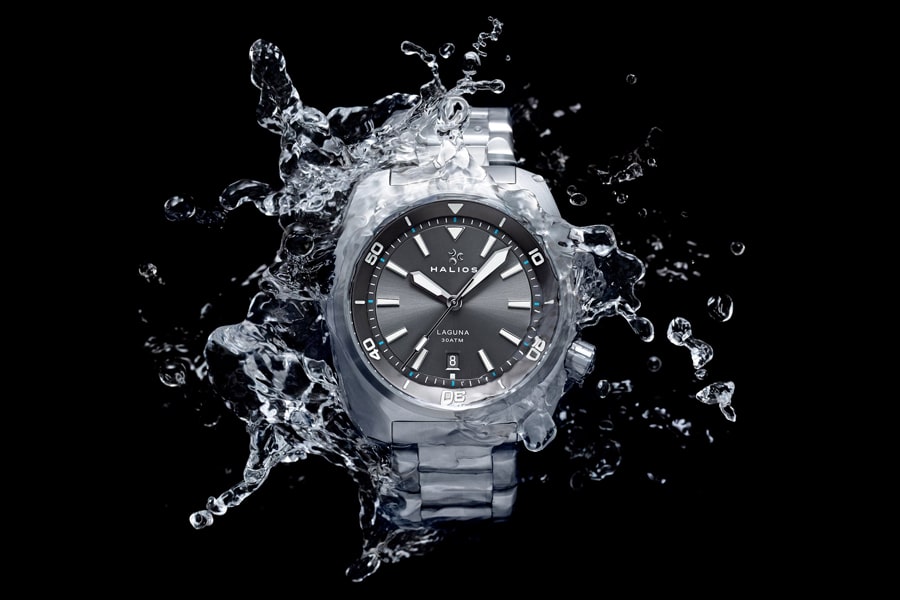Introduction
The main source of a watch’s timekeeping precision is an oscillator, which produces constant, periodic motions. The oscillator basically guarantees that a watch can keep a steady rhythm and so measure time consistently. Whereas quartz watches use a vibrating crystal, mechanical watches often get this rhythm from a balancing wheel and hairspring combo. From hours to milliseconds, this rhythm lets people partition time so they may track it down to minute accuracy.
The oscillator in a watch functions like a pendulum in a grandfather clock, setting the speed of the whole mechanism. Without an oscillator, a watch would lose its capacity to measure time precisely, rendering it essentially useless as a timekeeper. Understanding oscillators helps both fans and collectors better appreciate the quality of a great timepiece.
The Oscillator’s Scientific Foundations

Incorporating harmonic motion, timekeeping devices rely on principles of physics. Harmonic motion refers to the regular cyclic back-and-forth movement of an object through a central point, a phenomenon not limited to watches. This motion is evident in the vibration of a guitar string or the swing of a pendulum. In watches, this repetitive movement enables a precise and consistent division of time.
For mechanical timepieces, the balance wheel and hairspring rotate in harmonic motion, swinging back and forth at constant intervals. In quartz models, the crystal vibrates at a specific frequency. Whether mechanical or quartz-based, this movement is essential for marking regular increments that divide time with precision.
The Function Of The Oscillator Regarding Timekeeping Accuracy
Setting the exact rhythm that drives the other parts of the watch depends mostly on the oscillator. Usually slower, this rhythm in a mechanical watch is oscillated at 2.5 to 5 beats per second. Mechanical timepieces have their unique ticking sound from this slower oscillation rate. Conversely, quartz watches oscillate at a far faster rate—usually 32,768 times per second—which yields exceptional accuracy.
For those who wear watches daily, maintaining timekeeping accuracy might seem straightforward. However, achieving this precision involves intricate mechanisms that adjust for external factors such as temperature changes, gravitational influences, and everyday wear. In response, many luxury watch brands have invested significantly in advancing this technology, continually enhancing the accuracy and durability of their timepieces.
Variations Of Oscillators In Watches
Over time, watchmakers have created numerous kinds of oscillators with special uses and benefits. This information can help us appreciate various timepieces and the technologies used in each one.
Mechanical Oscillator
The hallmark of conventional watches is mechanical oscillators. Comprising a balance wheel and a hairspring—parts that oscillate back and forth—they maintain time. Usually between 18,000 and 36,000 beats per hour, this movement in mechanical timepieces is slower than that in quartz equivalents. The hairspring coils and uncoils as the balancing wheel whirls, driving the hands of the watch with an exact rhythm.
Oscillations Of Quartz
With their great precision at reasonable prices, quartz oscillators transformed the watch business in the 20th century. A tiny quartz crystal used in these oscillators vibrates as an electric current flows across it. The crystal is usually formed and sliced 32,768 times per second such that it vibrates at a particular frequency. The extremely stable oscillation of the quartz crystal produces a watch significantly more accurate than many mechanical timepieces that lose just a few seconds every month.
Spring Drive Oscillators
Designed by Seiko, the Spring Drive oscillator is a hybrid mechanism combining mechanical and quartz elements. It still uses a conventional mainspring but replaces the traditional balance wheel with a glide wheel, controlled by an electromagnetic brake driven by a quartz crystal. This unique combination provides outstanding accuracy and longevity, allowing the second hand to move with a distinctive, smooth sweep—a signature feature of Seiko’s Spring Drive technology.
Atomic Oscillators
Though not often seen in wristwatches, atomic oscillators are the height of accuracy. Usually cesium or rubidium, these oscillators use atom vibration to produce an extraordinarily precise time base. Keeping time accurate to within a billionth of a second every day, atomic clocks—which use atomic oscillators—form the benchmark for all other clocks and watches.
Oscillators’ Evolution In Watchmaking
Over millennia, timekeeping mechanisms have evolved significantly. Early watches relied on simple harmonic motion through balance wheels, but issues like temperature changes and friction affected their precision. Watchmakers explored various materials and designs to reduce these sensitivities and improve accuracy. The arrival of quartz technology in the 1960s marked a pivotal moment in watch history, providing an unprecedented level of precision and making timepieces widely accessible. Seiko’s 1999 Spring Drive represented the next step, blending the craftsmanship of mechanical engineering with the accuracy of quartz timing.
Oscillator Frequency: The Value
The performance of a watch relies heavily on frequency, often measured in beats per hour (BPH). Mechanical watches operate at various frequencies, with a higher BPH indicating more vibrations per second, leading to increased accuracy. For example, a watch running at 36,000 BPH provides a smoother second-hand motion and greater precision than one running at 28,800 BPH. However, higher frequencies require more energy, which may impact the watch’s power reserve.
In contrast, quartz timepieces vibrate at a much higher frequency—32,768 Hz—delivering exceptional accuracy. Unlike mechanical watches, quartz models do not need regular winding, making them highly convenient and reliable for everyday use.
Oscillator Innovations For Luxury Watches
Luxury watch companies are continually advancing timekeeping accuracy and minimizing external interferences through cutting-edge technology. Rolex, for example, developed its highly precise Parachrom hairspring, engineered to resist magnetic fields and temperature fluctuations, ensuring greater precision. Similarly, brands like Omega and TAG Heuer have invested in anti-magnetic materials and silicon components to reduce the effects of outside influences on their movements, marking a significant leap in watch reliability and performance.
These developments appeal especially to watch collectors. Timepieces with sophisticated oscillators not only show great performance but also reflect the forefront of horological engineering, therefore adding to the value and attraction of the watch.
Learning Oscillator Maintenance

Consistent precision in timekeeping relies heavily on maintenance. Regular service is crucial for mechanical watches, as wear and tear can disrupt the smooth operation of the hairspring and balance wheel. During a typical service, a watchmaker will clean, lubricate, and adjust these components to ensure optimal performance. Quartz watches, though relatively low-maintenance, may need occasional battery replacements to keep them running reliably. Even spring-drive watches, known for their durability, benefit from periodic care.
Proper maintenance ensures your watch will remain a dependable companion for years. Whether it’s a high-tech quartz or a classic mechanical model, preserving accuracy and longevity hinges on regular upkeep.
Conclusion
The core mechanism of a watch embodies the precision, artistry, and innovation of timekeeping, serving as its heartbeat. This essential component, whether in a mechanical or quartz watch, allows us to measure time with remarkable accuracy, linking us to both horological traditions and modern advancements in watchmaking. From the mechanical systems powering classic clocks to the ultra-precise quartz crystals driving reliable, accessible contemporary watches, the evolution of this mechanism reflects humanity’s pursuit of perfection in time measurement.
Frequently Asked Questions
1. Why Is The Oscillator So Important In A Watch?
A watch can retain correct time because the generates continuous, periodic movement that divides time into predictable increments. The watch’s timekeeping mechanism revolves around this central element.
2. Apart From A Mechanical Oscillator, What Distinguishes A Quartz Oscillator?
While a quartz watch generates movement using a vibrating quartz crystal, a mechanical watch typically relies on a balance wheel and hairspring. Operating at a higher frequency than their mechanical counterparts, quartz movements tend to offer greater precision.
3. On What Frequency Should I Service A Mechanical Oscillator Watch?
Depending on use and the particular model, mechanical watches usually need servicing every three to five years. Regular servicing increases the oscillator’s lifetime and helps to preserve precision.
4. Why Should One Pay Attention To Oscillator Frequency?
Frequency is the oscillator’s completed oscillations in one second or one hour. Though it can also influence the power reserve and movement durability, higher frequency usually indicates more precision.
5. Do Wristwatches Exist With Atomic Oscillators?
Given their size and complexity, atomic oscillators are often found in atomic clocks rather than wristwatches. Some wristwatches, meanwhile, are made to synchronize with atomic clocks for maximum precision.









